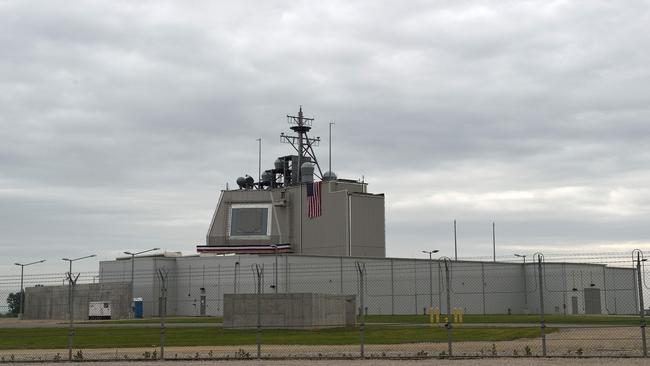Russia says Japan’s purchase of new missile defence network is in violation of treaties
RUSSIA has attacked one country’s plans to construct a new missile defence system in the face of North Korean aggression.
A DECISION by Japan to deploy a US-designed missile defence system will damage Moscow’s relations with Tokyo, Russian Foreign Ministry spokeswoman Maria Zakharova says.
It is also a breach by Washington of a landmark arms control treaty, she warns.
But Japan’s Prime Minister Shinzo Abe has called the North Korean missile threat a “national crisis”, winning public support for new military roles and equipment that used to be taboo under Japan’s strictly self-defence-only policy.
RELATED: China protests Japan’s plans for F-35 aircraft carriers
As part of this ‘crisis’, Japan’s government formally decided this month it would expand its existing ballistic missile defence system with US-made ground-based Aegis radar stations and interceptors.
Aegis refers to a complex network of radars, computers and missiles designed specifically to locate, identify, track and intercept hostile missiles and aircraft.
But both Russia and China regard the establishment of land-based missile defence networks to be a threat to their ability to launch retaliatory, ‘second strike’ nuclear ICBM missile barrages.
The concept of ‘Mutually Assured Destruction’ has been a major diplomatic influence throughout and since the Cold War.

OFFENSIVE DEFENCE
“Actions like these are in direct contradiction to the priority of building military and political trust between Russia and Japan, and, unfortunately, will impact in a negative way on the whole atmosphere in bilateral relations, including negotiations over the peace treaty problem,” Zakharova told a weekly briefing.
“In practice it will mean one more breach of the Intermediate-Range Nuclear Forces Treaty by the Americans with, in fact, Japan’s assistance.”
RELATED: Why Japan hasn’t shot down Kim’s missiles
Russia and Japan never formally ended their hostilities after World War II because of a dispute over a chain of islands in the Pacific.
Concluding a peace treaty between Russia and Japan would involve Moscow examining how it could be affected by Tokyo’s security commitments to its allies, Russian President Vladimir Putin said last month.
But the ongoing testing of evermore sophisticated ballistic missiles by North Korea, along with the heated war of words between its leader Kim Jong-un and US President Donald Trump, have spurred both South Korea and Japan to improve their defences.
EXPLORE MORE: What war between the US and China would look like
The arrival of US-operated THAAD antimissile radars and interceptors in South Korea earlier this year sparked a diplomatic standoff with China, which fears its radars will peer deep within its own territory.
Russia holds similar fears for the Aegis-Ashore network proposed by Japan will do the same to its strategically significant Pacific territories.

AEGIS ASHORE
Prime Minister Shinzo Abe’s Cabinet earlier this month approved Japan’s biggest defence budget at 5.19 trillion yen ($US46 billion). Much of the extra money is aimed at bolstering its existing ballistic missile defence capability. Japan’s current two-level missile defence network consists of Patriot batteries and Aegis-equipped destroyers deployed in the Sea of Japan.
Cabinet also approved an additional 23.5 billion yen ($US 208 million) defence spending for next-generation missile interceptors. This represents the initial down-payment for the advanced US Aegis Ashore missile combat system.
The Aegis Ashore network is based on a similar system to that already carried by four of Japan’s six Aegis destroyers. The remaining two are scheduled to be upgraded to ballistic-missile defence standards in 2018.
But the two Aegis Ashore structures are not likely to be ready until 2023, despite the recent fast-tracking of the purchase process. Each will likely cost about $US728 million.
DELVE DEEPER: The future of war is in our cities
Japan chose the Aegis-Ashore system over the mobile THAAD system largely due to cost. Six batteries and their associated radars and support structure would cost about $US1 billion each.
North Korea has test-launched more than a dozen missiles this year alone, two flying over northern Japan and several others landing inside Japan’s 200 nautical-mile exclusive economic zone.



